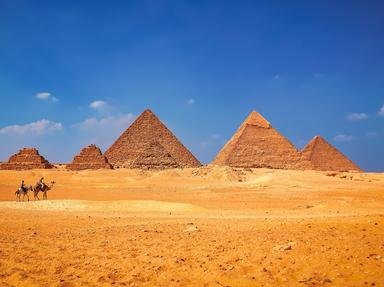Quiz Answer Key and Fun Facts
1. The decipherment of the Rosetta Stone allowed scholars to decode ancient Egyptian hieroglyphic writing. What does "hieroglyphics" mean?
2. For which pharaoh was the Rosetta Stone made?
3. What was the original purpose of the Rosetta Stone?
4. Of what material is the Rosetta Stone made?
5. Who is given credit for finding the Rosetta Stone in modern times?
6. Which of the following statements best describes why the Rosetta Stone was given its current name?
7. Which of the following most accurately describes how the Rosetta Stone was being used when it was found in 1799?
8. Who is given credit for using the Rosetta Stone to unlock the secrets of hieroglyphics?
9. The Rosetta Stone displayed three types of writing. Which of the writings was key to decoding hieroglyphics?
10. Where can the Rosetta Stone be viewed today?
Source: Author
ponycargirl
This quiz was reviewed by FunTrivia editor
bloomsby before going online.
Any errors found in FunTrivia content are routinely corrected through our feedback system.

